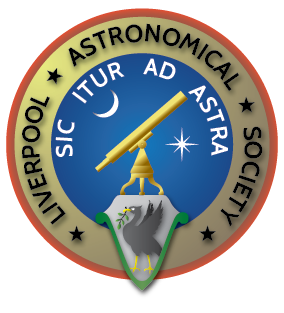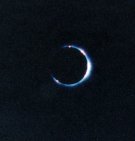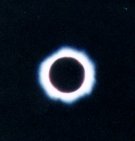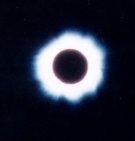Society News Headlines
- Oct 2nd:FAS meeting at Cambridge.
- Oct 5th:Venus 5° South of Moon.
- Oct 5th:Regulus 1°.2 South of moon.
- Oct 8th:Venus 3° South of Moon.
- Oct 11th:Mercury 7° South of Moon.
- Oct 13th:Neptune Stationary.
- Oct 15th:Mars 5° South of Moon.
- Oct 15th:Liverpool A.S. Monthly meeting at RC Catheral Crypt 7pm.
- Oct 18th: NASA Jupiter probe Galileo launched to-day in 1989.
- Oct 18th:Neptune 0.5° South of Moon.
- Oct 19th:Uranus 0.4° South of Moon.
- Oct 21st:Orionids meteor shower Max.
- Oct 22nd:Vesta in conjunction with Sun.
- Oct 22nd:LASSWA meeting at Halewood Country park, 7:30pm – telescopes and astronomical Slide show.
- Oct 23rd:Jupiter at oppostion.
- Oct 23rd:Uranus stationary.
- Oct 24th:Mercury – greatest elongation East. (Evening sky) 24°.Badly placed for Liverpool.
- Oct 25th:Saturn 2° North of Moon.
- Oct 27th:BAA AGM & Presidential Address, 5:45pm Savile Row,London.
- Oct 27th:Aldebaran 1.2° South of Moon.
- Oct 31st:Venus – greatest elongation West. (Morning sky) 46°.
THE NIGHT SKY DURING THE MONTH OF OCTOBER 1999.
Will it be cloudy to-night?, ask the The U.K. Goverment Met Office Weather service. To make your own star chart fo your location at any time, Click Here.
The Sun and Moon
All times are in British Summer Time (B.S.T.). But Please note that at the end of the month the clocks are put back one hour to take us into GMT.
Therefore subtract one hour from the times stated here to obtain GMT. Times For Observer in Liverpool, Merseyside, England, U.K.
Latitude 53 degs 24 mins North.
Longitude +3.0 degs West.
3rd 8th 13th 18th 23rd 28th 2nd Nov SUNRISE 07:17 07:26 07:35 07:44 07:53 08:03 08:12 SUNSET 18:45 18:33 18:21 18:10 17:59 17:48 17:38
| PHASES OF THE MOON DURING OCTOBER 1999 | ||||
| LAST QUARTER on 2nd at 05h:03m |
NEW MOON on 9th at 00h:35m |
FIRST QUARTER on 17th at 16h:01m |
FULL MOON on 24th at 22h:03m |
LAST QUARTER on 31st at 13h:05m |
THE PLANETS THIS MONTH.
MERCURY.
Although Mercury reaches its greatest Eastern elongation on the 24th, which means that it should be visible as an eveing object, the angle of its orbit with respect to our Northern horizon is shallow which means that it doesn’t appear above the horizon at all at the time of civil twilight.
VENUS.
In the middle of the month Venus is at its highest point above the horizon. Its’ greatest elongation is on the 30th when it lies 46°.5 West of the Sun in the morning sky. Phase is 43% diameter 28″.
MARS.
Mars still features in the evening sky, but is now at its furthest south of the apparition in the constellation of Sagittarius. It has shrunk below 7′ in diameter and it is now difficult to see the surface markings. CCD observers with a good Southern aspect may still be able to get reasonable images. On the 16th the Moon passes 4.5° South of Mars.
MARSWATCH – latest observations of the red planet.
ASTEROIDS.
- 85 IO and Undina are at oppostion this month at Mag 10.
- 16 Pysche and 198 Ampella remain on view from last month.
- 216 Kleopatra, 354 Eleonora, and532 Herculina are all well placed at 11th Mag.
For More information on Asteroids Click Here.
JUPITER.
Jupiter reaches opposition on the 23rd and is a huge 49″ across, and makes a fine sight in telescopes. On the 24th the Moon passes a wide 4.°5 South of the planet.
Launched in October 1989, the Galileo Jupiter Probe entered orbit around the great planet on December 7th 1995. The Project Galileo Homepage will give you up-to-date information and the very latest images returned.
SATURN.
Saturn is nicely placed, lying a little way to the left of Jupiter. Jupiter will start to overtake Saturn in the middle of 2000, the first time the two planets will be in the same small region of the sky at the same time since 1981.
URANUS and NEPTUNE.
Both are still with us, but by months end are hiding in the South Western horizon’s murk, within the constellation of Capricornus . Uranus should be visible through binoculars under a clear, dark sky, but Neptune may need further resolving power – i.e. a telescope – to distinguish it from a star.
Planet Positions During October 1999:
Uranus Oct 1st R.A. 21h:02m:57s DEC -17°:33':50" Mag 5.7 Neptune Oct 1st R.A. 20h:15m:16s DEC -19°:32':19" Mag 7.9
PLUTO.
Tiny distant pluto is now very poorly placed for observations from Liverpool. Please note even at opposition Pluto reachers 13.7 Mag.
METEORS.
13th Piscids Low Rates Favouable (4 day old Moon) 21st/22nd Orionids 20 Per Hour Unfavourable (11 day old Moon)
COMETS.
- Comet P/1999 RO28 (Loneos) at Perihelion on Oct 2nd (1.231 AU).
- Comet C/1999 J4 (Linear) at Perihelion on Oct 28th (3.862 AU).
- Comet C/1999 K2 (Ferris) at Perihelion on Oct 30th (5.163 AU).
Plus these pages will give daily and weekly reports of this and other Comets progress.
- BAA Comet Section Home Page
- Comet Web Sites.
- NASA/JPL Comet Observations Home Page.
- The Astronomer Comet Page.
OCCULTATIONS.
- Oct 1st at 02h:53m:47s Reappearance of 199 Tauri.









